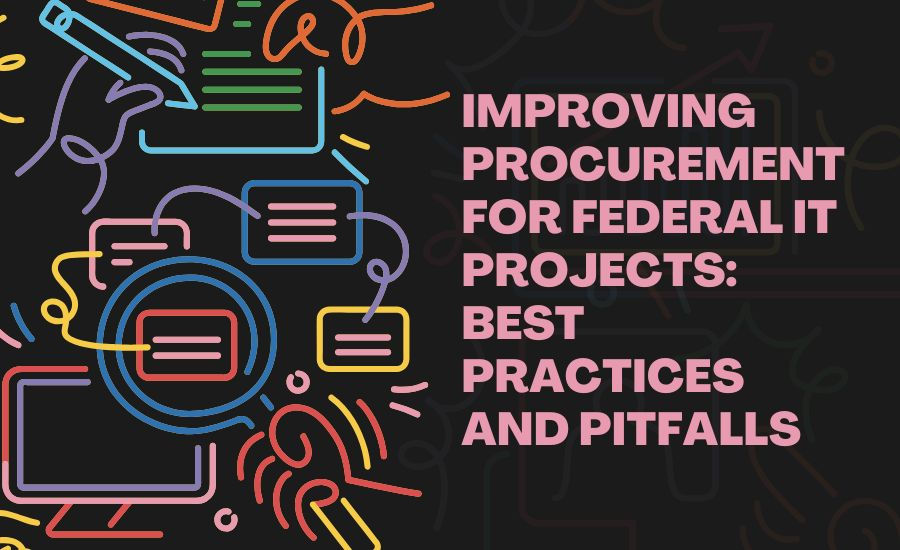Future-Proofing Federal IT: Emerging Tech (5G, Quantum, Edge) and What CIOs Need to Prepare For
- Harshil Shah
- Oct 21
- 3 min read

The pace of technological change shows no signs of slowing—and for federal Chief Information Officers (CIOs), that means building IT environments capable of adapting to whatever comes next. Emerging technologies like 5G, quantum computing, and edge computing promise to transform how government collects data, delivers services, and protects national interests. But with those opportunities come complex challenges in security, integration, and governance.
5G: The Foundation for a Connected Federal Ecosystem
The rollout of 5G networks across the U.S. is enabling faster data transfer, lower latency, and greater connectivity for devices across the federal enterprise. For CIOs, 5G opens the door to new capabilities—from real-time analytics in defense operations to enhanced mobile access for field agents. However, it also expands the attack surface, requiring tighter coordination between CIOs, CISOs, and network architects to manage security and compliance.
CIOs should start by evaluating 5G pilot projects that align with mission needs and develop procurement frameworks that account for spectrum management, secure hardware, and vendor interoperability. Agencies that prepare now will be better positioned to deploy secure, scalable 5G-enabled systems in the near future.
Quantum Computing: Preparing for the Post-Encryption Era
Quantum computing is no longer science fiction—it’s an imminent disruptor. Federal agencies must prepare for its potential to break classical encryption methods while unlocking new possibilities for data analysis, logistics, and predictive modeling. CIOs should collaborate with CISOs and technology leaders to plan a quantum-safe transition, including the adoption of post-quantum cryptography as defined by NIST.
While true quantum computing at scale may still be years away, CIOs can begin by assessing which systems rely most heavily on vulnerable cryptographic standards and by working with vendors who support emerging post-quantum solutions. Early planning today will avoid costly re-engineering later.
Edge Computing: Bringing Data Closer to the Mission
As federal agencies generate more data from IoT sensors, field operations, and mobile platforms, edge computing is becoming critical to process information closer to where it’s collected. This reduces latency, enhances real-time decision-making, and improves reliability in remote or bandwidth-constrained environments—such as defense, emergency response, or transportation networks.
For CIOs, deploying edge solutions means rethinking architecture. Agencies must design hybrid environments that seamlessly integrate edge, cloud, and on-premise systems, supported by strong identity management and continuous monitoring. The result: faster insights, lower costs, and improved mission performance.
Security and Governance: The Cornerstones of Future Readiness
Emerging technologies bring exponential value—but also new risk vectors. CIOs should embed Zero Trust Architecture across networks, enforce data segmentation, and ensure all connected devices meet compliance baselines. Governance frameworks must evolve to address decentralized infrastructure and vendor accountability. Building standardized playbooks and cross-agency coordination mechanisms will help ensure consistent, secure adoption.
Building a Future-Ready IT Workforce
Technology alone isn’t enough. Future-proofing federal IT also requires a workforce that can manage advanced technologies effectively. CIOs should invest in upskilling programs focused on AI, quantum resilience, and cloud-native architecture. Collaborations with universities, federal labs, and private-sector partners can help bridge the talent gap while ensuring technology innovation aligns with mission outcomes.
Next Steps for Federal CIOs
To stay ahead, federal CIOs should:
Develop multi-year modernization roadmaps that incorporate emerging technologies into long-term planning.
Align pilot projects with mission-critical outcomes and measurable success criteria.
Adopt adaptive procurement processes to keep pace with rapid technology cycles.
Collaborate with CTOs and CISOs to balance innovation with operational security.
Looking Ahead
Future-proofing federal IT isn’t about predicting every new technology—it’s about building the agility to adapt. CIOs who prepare for 5G, quantum, and edge computing now will lead agencies that are not only more efficient but also more resilient and mission-focused. The next decade of government modernization will reward those who innovate strategically, manage risk effectively, and build infrastructure ready for whatever comes next.
For more insights on federal IT modernization and digital leadership, visitCIOMeet.org.




Comments